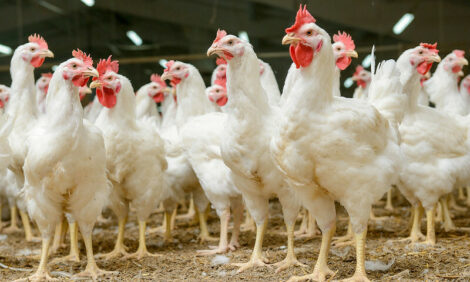



Task Force to Tackle Antimicrobial Resistance in Agriculture
UK - A review on antimicrobial resistance has been published today, identifying farming as one of the key areas to help halt this global issue.Resistance is already making drugs less effective at treating illnesses like tuberculosis, and the report said the problem could kill 10 million people a year by 2050, the equivalent of 1 person every 3 seconds.
The review, by Lord Jim O'Neill, sets out four particularly important areas where antimicrobial resistance can be tackled.
Reducing antibiotic use in farming is one of these, but the report also suggests a global public awareness campaign, improved development of new drugs, and improved diagnostics so doctors don't need to prescribe antibiotics when they won't work, among other measures.
The report said that many countries use more antibiotics in animals than humans, and suggests more transparency is needed from food producers.
"The actions that I’m setting out today are ambitious in their scope – but this is a problem which it is well within our grasp to solve if we take action now.
"I call on the governments of the G7, G20 and the UN to take real action in 2016 on the ten proposals made by my Review, to avoid the terrible human and economic costs of resistance that the world would otherwise face,” Mr O'Neill said.
UK agriculture reaction
The UK's Responsible Use of Medicines in Agriculture (RUMA) Alliance announced it is setting up a ‘task force’ to look at how meaningful targets can be developed to replace, reduce and refine antibiotic use in UK agriculture, in response to the report.
John FitzGerald, RUMA’s secretary general, said: “We also understand the report’s ambition to develop long-term targets. The industry has long recognised the beneficial role targets can play, but is acutely aware that inappropriate targets can also be counterproductive and even lead to increased risk of resistance.
“So we are delighted to announce the setting up of this task force which will harness the expertise of specialists across different sectors and work proactively with the authorities to look at identifying effective, evidence-based goals that work for our UK livestock sectors and protect animal welfare.”
He added that the UK focus was especially important as while there were important lessons to learn from other countries’ experiences in reducing antibiotic use, direct comparisons were never simple.
“It should be remembered that the Danish government invested heavily to allow its pig farmers to build new high-health premises; and in reducing its antibiotic usage by nearly 60%, the Netherlands is now at approximately the same level of use as the UK. So we must look at how we develop the right goals for our sectors.”
Mr FitzGerald said that RUMA was also pleased to see recognition of the importance of surveillance. “Our UK poultry meat sector set up detailed surveillance of antibiotic use five years ago and through this has been able to replace, reduce and refine antibiotic use and pass on its learnings to other sectors.
“These include the pig sector, which has just launched an online medicine book and stewardship programme to improve on pig usage data already collected through the Red Tractor scheme, which has been in place since October 2014; and the cattle sector, which announced last year it would be working with vets to collect usage data.”








